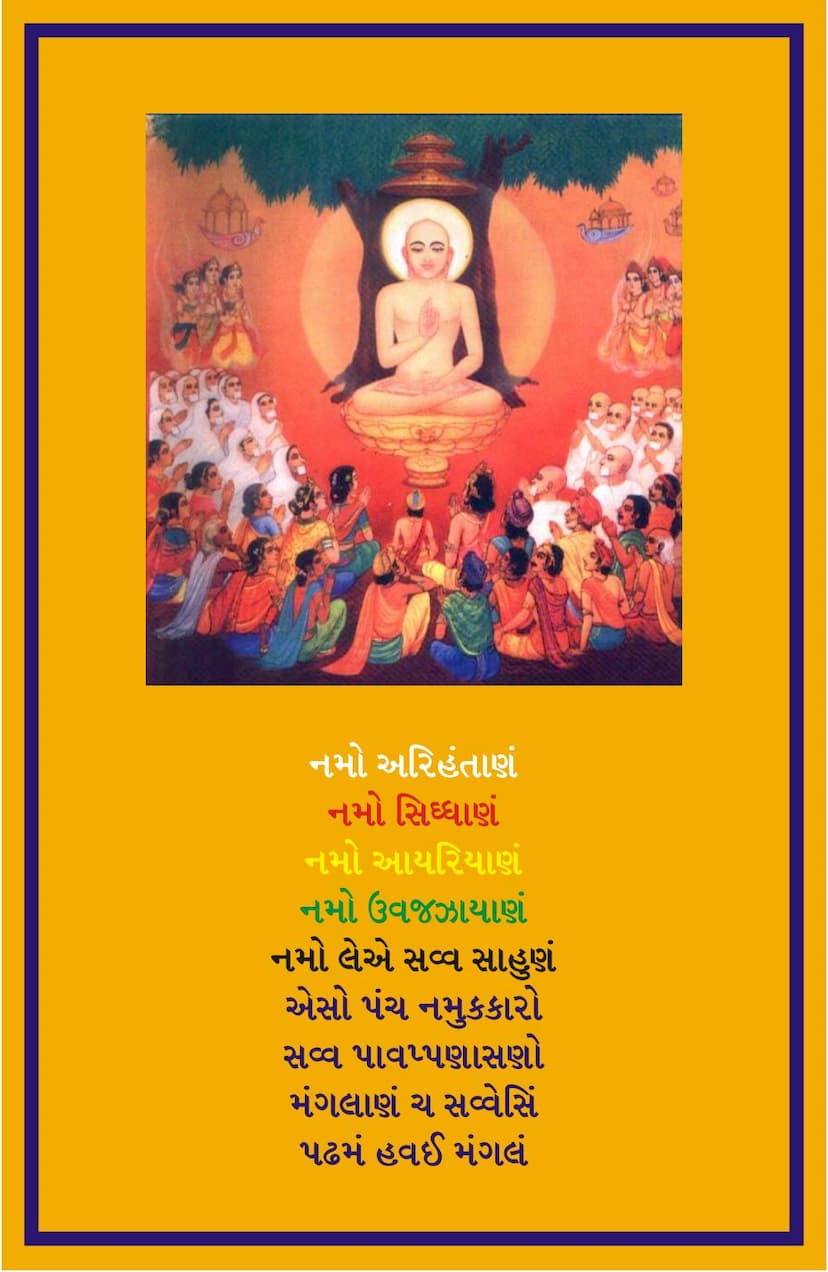Agam 30 Mood 03 Uttaradhyayana Sutra Part 04 Sthanakvasi Gujarati
Added to library: September 1, 2025

Summary
The provided text is the fourth part of the Uttaradhyayana Sutra, a significant Jain text, specifically the Agam 30 Mood 03 Uttaradhyayana Sutra Part 04 Sthanakvasi Gujarati edition.
Here's a comprehensive summary based on the provided pages, focusing on the content rather than just the metadata:
Overall Context:
- Title: Uttaradhyayana Sutra, Part 4.
- Author/Commentator: Ghasilal Maharaj (with commentary).
- Publisher: A B Shwetambar Sthanakvasi Jain Shastroddhar Samiti.
- Language: Gujarati with Hindi and Sanskrit elements.
- Content: This part covers Chapters 25 to 36 of the Uttaradhyayana Sutra, providing detailed explanations and narratives.
- Purpose: The text is for private and personal use in Jain education.
Key Themes and Content (based on the chapter titles and initial descriptions):
The provided text details the content of chapters 25 through 36 of the Uttaradhyayana Sutra. These chapters delve into various aspects of Jain philosophy, conduct, and spiritual practice. Based on the chapter titles and snippets of the text, the following themes emerge:
-
The Life and Teachings of Great Souls:
- Chapters 25-28: Focus on the narratives and teachings of significant figures like Jayghosh and Vijayghosh, highlighting their spiritual journeys and the principles they embodied. These stories often serve as parables to illustrate Jain doctrines.
- Chapter 26: Samachari (Conduct): This chapter is particularly detailed, outlining the ten types of "Samachari" (proper conduct or etiquette) for monks. It explains practices like Aavashyak Samachari (essential duties), Nishidhiki Samachari (conduct based on prohibitions), Aparichchana (asking for guidance), Pratipakshana (asking for confirmation), and others. The text goes into detail about how these practices are performed throughout the day and night, including specific times and actions.
- Chapter 25: Yagya (Sacrifice): This chapter begins with the narrative of Jayghosh and Vijayghosh, focusing on their encounters and discussions. It clarifies the Jain perspective on "sacrifice," contrasting it with traditional Vedic notions and emphasizing the spiritual nature of true sacrifice as understood in Jainism. The detailed explanation of what constitutes a true "Brahmin" in Jain philosophy is a significant part of this chapter.
- Chapter 27: Shatata (Deceitfulness): This chapter examines the nature of deceit and crookedness, likely through stories and examples. It contrasts this with straightforwardness and the importance of sincerity for spiritual progress. The story of Gargacharya and his disciples illustrates the consequences of deceit.
- Chapter 28: Moksha Marg (Path to Liberation): This chapter likely discusses the path to liberation, detailing the importance of Right Faith (Samyak Darshan), Right Knowledge (Samyak Gyan), Right Conduct (Samyak Charitra), and Asceticism (Tapas). It explains the nature of these elements and their role in achieving liberation.
-
Ascetic Practices and Observances:
- Paurushi Time: The text provides detailed instructions on calculating and observing Paurushi (a division of time in the day/night) for specific practices like Swadhyaya (study) and Dhyana (meditation).
- Pratilekhana (Inspection of Utensils/Cloth): There's a significant section dedicated to the meticulous process of Pratilekhana, outlining various rules and the correct way to inspect objects to avoid harming even the smallest living beings. This includes detailed descriptions of the number of inspections, methods, and the faults to avoid (dosha).
- Daily Routines: The text outlines the daily schedule and duties of monks, including specific times for study, meditation, and other practices, both during the day and night.
- Tapas (Asceticism): Chapters discuss the importance and types of Tapas, including both external (bahya) and internal (abhyantara) austerities. Various forms of Anashan (fasting) are explained, along with detailed procedures for observing them, especially during Maranakal (time of death).
-
Ethical Principles and Virtues:
- Vinaya (Humility/Respect): The importance of humility and respecting elders and spiritual guides is highlighted, likely through stories and rules of conduct.
- Self-Control (Indriya Nigraha): The control of the senses is a recurring theme, with specific chapters dedicated to the control of sight, hearing, smell, taste, and touch.
- Purity: The text emphasizes the purity of actions, speech, and thought as essential for spiritual progress.
- Right Conduct: Various aspects of Samachari and ethical conduct are discussed, forming the backbone of monastic life.
-
Cosmology and Jain Principles:
- Tattvas (Realities): Chapter 29, titled Samyaktva Parakrama, mentions the Nav Tattvas (nine realities) and their significance in understanding the universe and achieving Samyaktva (Right Faith).
- Dravya, Guna, Paryaya: The text touches upon the philosophical concepts of substance (Dravya), quality (Guna), and mode (Paryaya).
- Karma Theory: The detailed explanation of the eight types of karmas (karmas) – their nature, causes, and effects – is a central part of the later chapters. The text elaborates on Jnana-avaraniya (knowledge-obscuring karma), Darshana-avaraniya (perception-obscuring karma), Vedaniya (feeling-producing karma), Mohaniya (delusion-producing karma), Ayushya (lifespan-determining karma), Nama (body-determining karma), Gotra (status-determining karma), and Antaraya (obstruction-causing karma).
-
Specific Rules and Prohibitions:
- Aswadhyaya (Times of Not Studying): Page 6 and 7 provide an extensive list of 32 instances of Aswadhyaya, times when study is prohibited. These include natural phenomena (like meteors, fires, storms, lightning) and ritualistic occasions (like festivals, eclipses), as well as specific conditions related to impure states (like menstrual periods).
- Rules for Monks: Throughout the chapters, detailed rules regarding conduct, diet, interaction with the world, and spiritual practices are laid out.
Structure and Method:
- Narrative and Didactic: The text uses stories of spiritual exemplars (like Jayghosh, Vijayghosh, Gargacharya) to illustrate complex philosophical points and ethical guidelines.
- Detailed Explanations: Chapters provide in-depth explanations of concepts, practices, and rules.
- Verse and Commentary: The sutras are presented with a commentary (vyakhya) by Ghasilal Maharaj, making the teachings accessible.
- Index: The presence of an index (vishayanushishtha) from page 11 onwards suggests a structured organization of the content within these chapters.
In essence, this volume of the Uttaradhyayana Sutra is a comprehensive guide to Jain monastic life, covering spiritual conduct, ethical principles, ascetic practices, and philosophical understanding, all aimed at the ultimate goal of liberation.